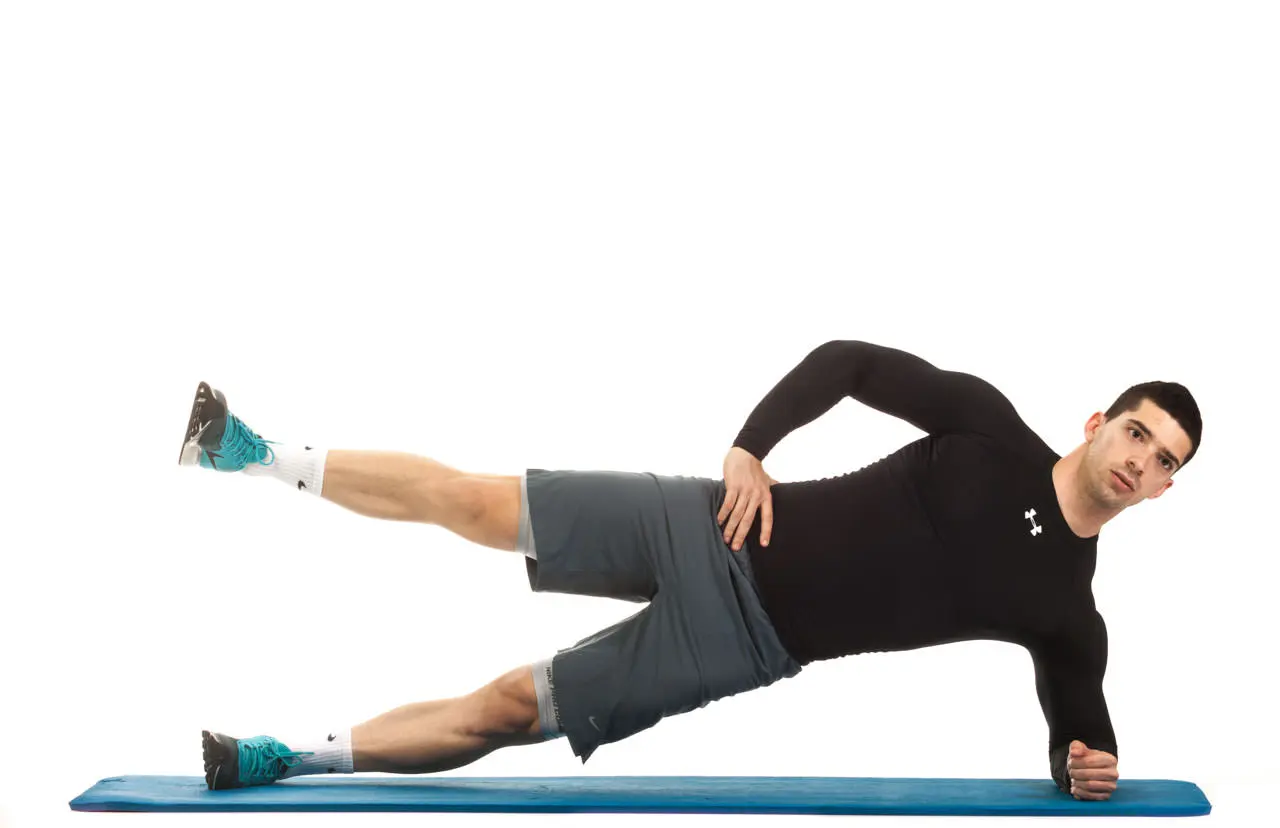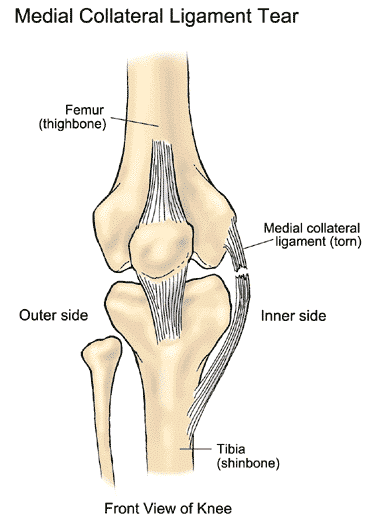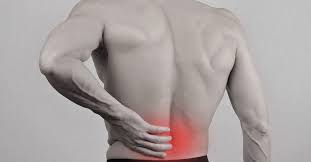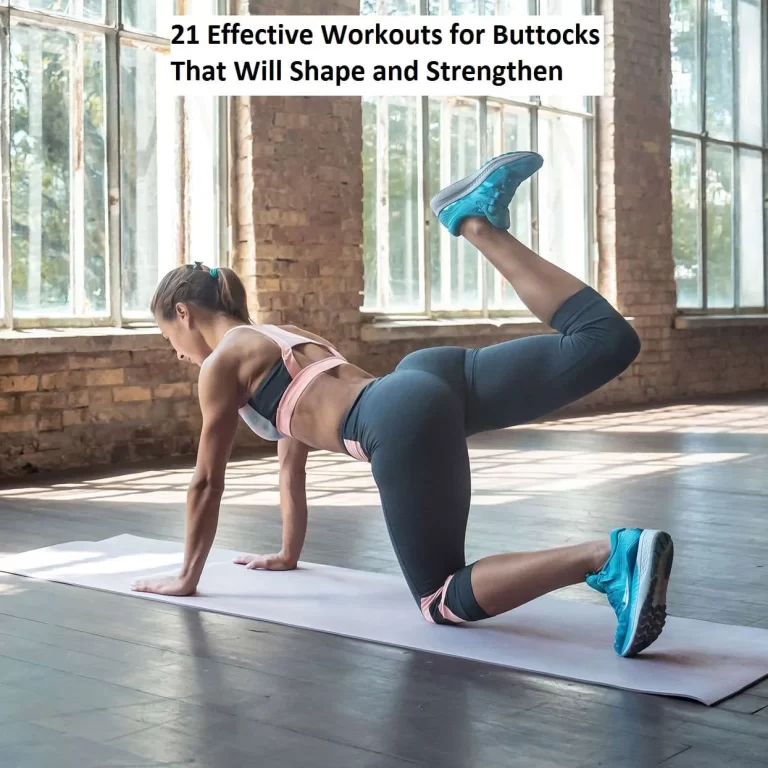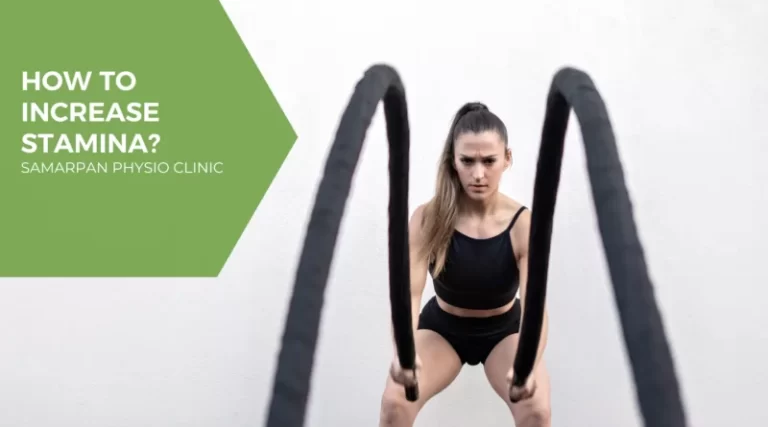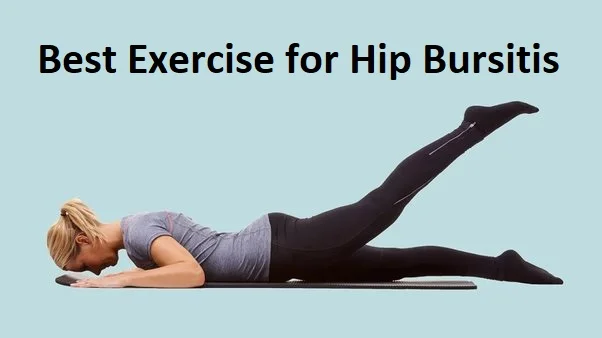Hip Abductor strengthening exercise
Table of Contents
What is the Hip Abductor muscles strengthening exercise?
Hip Abductor muscles strengthening exercise is a great way to make your Hip muscles powerful and to improve your performance.
- Hip abduction is a Hip movement that can move the leg away from the body. The hip abductors arise from the thigh bone to the pelvis, these muscles assist the patient in supporting when a patient walks, stands, & engages in physical activity. Strengthening these muscles assists the patient in making daily activity easy. Regular exercise helps a patient to prevent pain & injury of the hip.
- These three muscles are mostly involved to perform hip abduction: the gluteus medius, gluteus minimus, & the tensor fasciae late.
- The gluteal muscles make up the buttocks. The glutes have three different muscles: the gluteus maximus, medius, as well as minimus.
- The gluteus maximus muscles give the patient most of the shape, power, & explosiveness. The overshadowed gluteus medius &
- minimus are the prime movers for hip abduction. The tensor fasciae latae is a small muscle located in the upper thigh which supports the body for a walk. While small in size, this hip abductor provides significant stability to the lower body.
Health Benefits Of Hip Abductor Exercises
- While strengthening the hip abductors can not impress individuals at the gym, the patient cannot afford to neglect these important muscles. Specifically training the hip abductors is highly important for many reasons.
- Injury Prevention
- Strong hip abductors protect against injury. Without sufficient strength in the hip abductors, the knees have the tendency to move inwards when the patient walks or runs, leading to the “knock knee” position.
- Knock knee or even valgus position put stress on the knee joints & can easily cause strains in the muscles of the lower body.
- Strengthening the hip abductors can help the patient to avoid the above health issues & maintain proper lower body alignment, as well as move with safety & efficiency.
- Improved Agility
- As mentioned above, hip abductors are responsible for moving the legs away from the body. If the hip muscles are weak then, this is extremely difficult to move the leg away from the body.
- On the other hand, strong hips allow the patient to quickly change position & move about with efficiency.
- Helps to increase Strength Performance
- Helps to decrease knee valgus
- Helps to Better muscle activation & performance
- Helps to reduce Hip pain
- Weakness in the hip abductors, particularly the gluteus medius, can lead to overuse injuries, patellofemoral pain syndrome (PFPS), & iliotibial (IT) band syndrome. PFPS may cause pain back to the kneecap when the patient sits for prolonged periods or when going downstairs.
There are several exercises that help the patient to improve the strength
Fire Hydrants
- How to do this strengthening exercise:
- This is a simple bodyweight glute isolation exercise that mainly works on the gluteus medius.
- For this exercise, the patient has to take the quadruped position(on all four limbs). The leg should be flexed, raise the right leg out to the side until reaches hip height.
- Squeeze the gluteus medius and come back to the starting position.
- Again perform the same motion for ten to fifteen repetitions then move to the right leg.
- Complete one to two sets of ten to twenty repetitions of each leg.
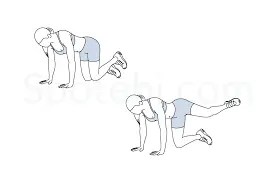
Hip Abduction with Cable

- How to do this strengthening exercise:
- For this exercise, the patient required a cable machine. It can be a powerful tool in developing hip abductors.
- Set up the cable machine at a lower pulley setting.
- Wrap the ankle slip to the outer foot & hold the machine for stability with the closed hand.
- Both legs should be extended, squeeze the hip abductors to bring the outer leg straight out to the lateral side.
- Hold for one to two seconds at that point, & gradually return to the starting position.
Leg Out Side Circles
- How to do this strengthening exercise:
- This exercise can look simple, but the patient will feel the burn in the gluteus medius & minimus while this exercise.
- For this exercise, the patient has to come in all four limbs with the hands directly under the shoulders.
- Straight the right leg out to the side with the toes pointing forward.
- Contract the glute muscle to move the foot in a circular direction.
- Make sure to switch the direction of the circle & switch to another leg.
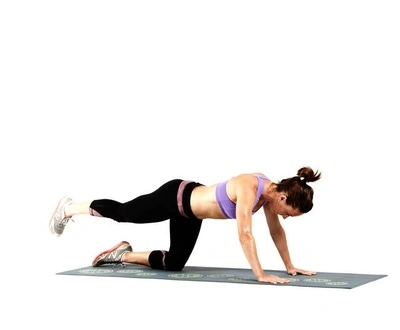
Side Lunge
- How to do the strengthening exercise:
- It is a great lunge alternative that targets hip abductors. Take the standing position with the toes slightly flared out & the feet wider than shoulder-width apart.
- Keep the right leg straight, flex the left knee, & shift the weight to the left side.
- Then, transition to the starting position & repeat on the right side.
- Do this with alternate legs as well.
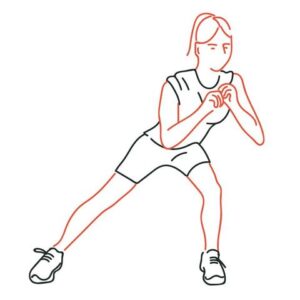
Leg Out Side Kickouts
- How to do this strengthening exercise:
- The leg outside kickouts is a challenging exercise to test the stamina of the gluteus medius.
- For this exercise, the patient has to take the quadruped position(on all four limbs). Flexed the knee, then kick outside & extend the leg.
- Switch the leg & do it again.
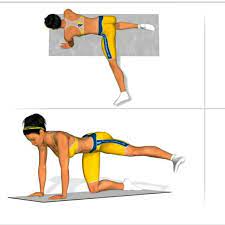
One-Legged Hip Thrust
- How to do this strengthening exercise:
- This is a powerful body-weight glute as well as hip exercise.
- For this exercise the patient has to lie on the back with the knee flexed, the arms should be by the side & the palms facing downward.
- Straighten the right leg & squeeze the glutes to thrusts the hip towards the roof.
- Pause at the top & gradually return to the embarking position. Do this on the left leg.
Lying Hip Abductions

- How to do this strengthening exercise:
- This exercise will primarily target the gluteus medius & the gluteus minimus muscles.
- For this exercise, a patient has to lie on the left side with the legs out straight & the upper body supported by the forearm.
- Squeeze the gluteus minimus to elevate the right leg as high as possible by you.
- Hold for a couple of seconds then gradually come back to the starting position.
- Do this motion on the left leg.
Curtsy Lunge
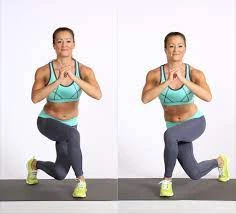
- How to do this strengthening exercise:
- It is another lunge variation that intensely activates the gluteus medius.
- For this exercise, a patient has to stand with the back straight as well as the chest held high. With the right foot straight in front of you, step with the left foot back & to the right.
- Both knees should be flexed & the legs should be crossed. Make sure the right knee is directly below the right ankle.
- Then drive up in a controlled movement to the standing position. Repeat this motion to the left foot out in front.
- The patient can switch the legs after every repetition or after completing each set.
Leg Out Side Pulses
- How to do this strengthening exercise:
- If the patient desires to target the gluteus medius, leg outside pulses are for you.
- For this exercise, a patient has to take a quadruped position(on all four limbs). Extend the right leg straight out to the side with the toes facing forward. Pulse the leg upward & downward for ten to fifteen repetitions of one to three sessions in one day.
- Then move to the left leg as well.
Step Up with Leg Raise
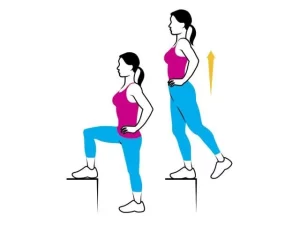
- How to do this strengthening exercise:
- This exercise becomes a great source of activation for the hip adductors. The step-up action also adds a small number of cardiopulmonary workouts to a routine.
- For this exercise, a patient requires a bench or a small platform that is at least two to three feet off the ground.
- However high the patient is comfortable stepping is fine, just make sure this is at least a little challenging.
- Step up with the left leg & then raise the body by driving through the left ankle. Put the right foot on the platform & then pull the right leg back.
- It will directly activate the adductors on the inner thigh.
- If the patient has not worked them out before, he could be quite sore after a few repetitions of these step-ups.
- Bring the right leg back in, and after that go back down to the starting position & repeat the action with the right foot leading.
- Recite the same number of repetitions on both legs as well.
Clamshell
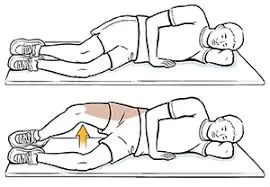
- How to do this strengthening exercise:
- This exercise may look a little silly however it is a great & easiest way to strengthen the hips. This can be a useful tool in detecting imbalances in the hips.
- For this exercise, a patient has to lie on the left side and take forearm support to the head like a pillow.
- Stack the knees & hips and flexed them together up to 45 degrees. The body should be in a neutral position & the head, neck, pelvis, as well as feet, are in the same alignment.
- The feet should be stacked & engage the core muscles as well as rotate the right knee upward & open by using the hip.
- Hold this position for ten to eleven seconds & then return to the embarking position.
- Do this action ten to fifteen times on both legs.
- The patient should be in a comfortable position while performing this movement.
Resistance Band Side Walks
- How to do this strengthening exercise:
- This is an effective way to strengthen the hip muscles. The patient can initiate with body weight lateral steps.
- Wrap a resistance band just above the ankle joint.
- Stand with the feet under the hips & squat down into a semi-seated position. The shoulders should be back as well as down & the gaze forward.
- Take a Step out to the side, pushing with the heel against a band.
- Now Step together again so the feet are once again hip-feet width apart.
- Focus on using the hips to drive the foot out and be sure to watch that the feet should be parallel. The toe will tend to try to lead the move. Keep tension on a resistance band at all times.
- Continue stepping to the side for ten to fifteen steps.
- Come back in the other direction for eight to ten steps.
- If a patient has limited space, he can also do these in a stable position. Just be aware to press the body out with the foot and not let the foot do all the in & out motion by itself.
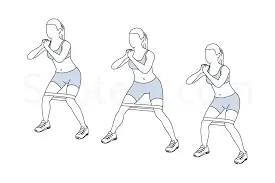
Advanced
- Start with light resistance & work up to more resistance bands to increase strength.
Hip Drop
- How to do this advanced hip drop strengthening exercise:
- This exercise is mainly used to rehabilitate a weak hip abductor, which may lead to leg mechanical issues, such as iliotibial band syndrome.
- This simple, yet intentional, move needs to be done with control & body awareness to ensure that the hip is initiating the motion rather than the legs.
- For this exercise, the patient has to stand on a step-raised surface with one foot. The patient should stand straight. Lower down the opposite leg, and start the motion from the hip joint.
- The shoulder should be stable while the whole motion. Hold the lower down position for two to four seconds without letting the pelvis rotate. Come back to the neutral hip position.
- Make both legs lower & lift gradually in a controlled motion.
- Complete ten to twenty repetitions on each side.
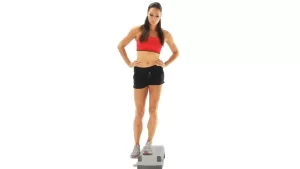
Sitting hip abduction with resistance band
- How to do advanced hip strengthening exercises:
- For this exercise, a patient has to sit in a chair. Wrap the resistance band around the knees or above the knees, with the knee’s hip shoulder-width apart.
- Smoothly move the knees outside against a resistance band & then bring them close to the body.
- Maintain an upright posture throughout this exercise.
- Do ten to fifteen repetitions of one to two sets.
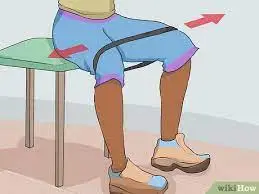
Side plank hip abduction
- How to do this strengthening exercise:
- Lie on the right side & place the forearm under you to support the body weight.
- Place the left hand on the hips. Then, place the left fist on the stomach to the hips for balance.
- Now, raise the trunk & hips until the body is in a straight line & then raise the left leg in the air.
- Exhale while this portion of the exercise. Hold for one to two seconds.
- Then, lower the left leg until this is on top of the right & lower the hips back down until the buttocks make contact with the ground.
- Breathe while this portion of the practice.
- Complete the desired number of repetitions.
- Next, switch to the left side & do the same for the ten to twenty repetitions.
- Do this on Alternate legs for ten to twenty repetitions of one to two sets.
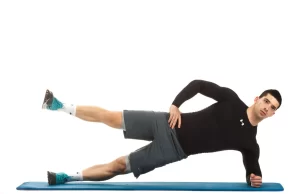
When did the patient not do these exercises?
- If the physician advised the patient to take rest.
- If the leg bone is recently fractured.
- If the patient is recently undergone any leg or abdominal surgery.
- If the patient feels pain or even any discomfort while this exercise.
FAQ
Hip abductor weakness is known to contribute to issues such as shin splints, & foot hyperpronation (flat feet). Foot hyperpronation as well as hip abductor weakness are known, biomechanical coconspirators. Gluteus medius weakness increased pressure on the inside of the foot, reducing the typical arch of the foot.
Also known as the lateral leg raise, this exercise involves lying on the side of the body & gradually raising & lowering the top leg in an upward movement. The person may wish to bend the lower leg for added support & aim to raise the top leg to a 45-degree angle.
The hip abductors are important & often forgotten muscles that contribute to the ability to stand, walk, & rotate the legs with ease. Not only may hip abduction exercises help the patient to get a tight and toned backside, but they can also help to prevent & treat pain in the hips as well as knees.
Underuse of the muscles or even sitting down for extended periods may cause weak hip flexors. Conditions namely osteoarthritis may also cause weakness in this muscle group.
Trendelenburg gait
A Trendelenburg gait is an abnormal gait resulting from a defective hip abductor mechanism. The primary musculature involved is the gluteal musculature, including the gluteus medius & gluteus minimus muscles. The weakness of these muscles causes drooping of the pelvis to the contralateral side during walking.

